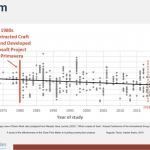By Dr. Anthony Kenneson-Adams, FInstLM, Head of Learning & Knowledge Transfer, Project7 Consultancy
Today we present the 5th installment of an 8-step process to enable you on your journey to Operational Excellence. We trust you will put these steps into action and power-up your journey to Operational Excellence.
Monitor progress: Monitoring progress is a crucial step in the continuous improvement process to ensure that your implemented changes are effective and yielding the desired results. Here are some steps to help you monitor progress after implementing a continuous improvement plan in manufacturing:
- Define Key Performance Indicators (KPIs): Identify and establish specific KPIs that align with the goals of your improvement plan. KPIs could include metrics such as production output, defect rate, cycle time, customer satisfaction, or any other relevant factors that measure the success of your improvements.
- Collect and Analyse Data: Implement systems and processes to collect relevant data related to the identified KPIs. This can include manual data collection, automated data acquisition systems, or even integrating data from existing manufacturing systems. Regularly analyse this data to evaluate the impact of your improvement plan on the identified KPIs.
- Conduct Periodic Assessments: Schedule regular assessments or audits to evaluate the effectiveness of your improvement plan. These assessments can be done weekly, monthly, quarterly, or as per your specific requirements. Assessments can involve reviewing data, conducting observations, gathering feedback from employees, and evaluating the overall progress made.
- Use Visual Management Tools: Implement visual management techniques such as dashboards, scorecards, or performance boards to provide a clear visual representation of progress. These tools help in tracking and communicating the improvements made and provide a quick snapshot of the current state of affairs.
- Involve Employees: Engage your employees in the monitoring process. Encourage them to provide feedback, report any issues or challenges they encounter, and share their observations regarding the implemented changes. Their input can be valuable in identifying areas for further improvement and ensuring the sustainability of the improvements made.
- Continuous Learning and Adaptation: Continuous improvement is an ongoing process. Continuously monitor progress, learn from the data and feedback collected, and adapt your improvement plan as needed. Regularly review the effectiveness of your changes and make adjustments if the desired results are not being achieved.
By following these steps, you can effectively monitor the progress of your continuous improvement plan in manufacturing and make data-driven decisions to optimize your processes further.










